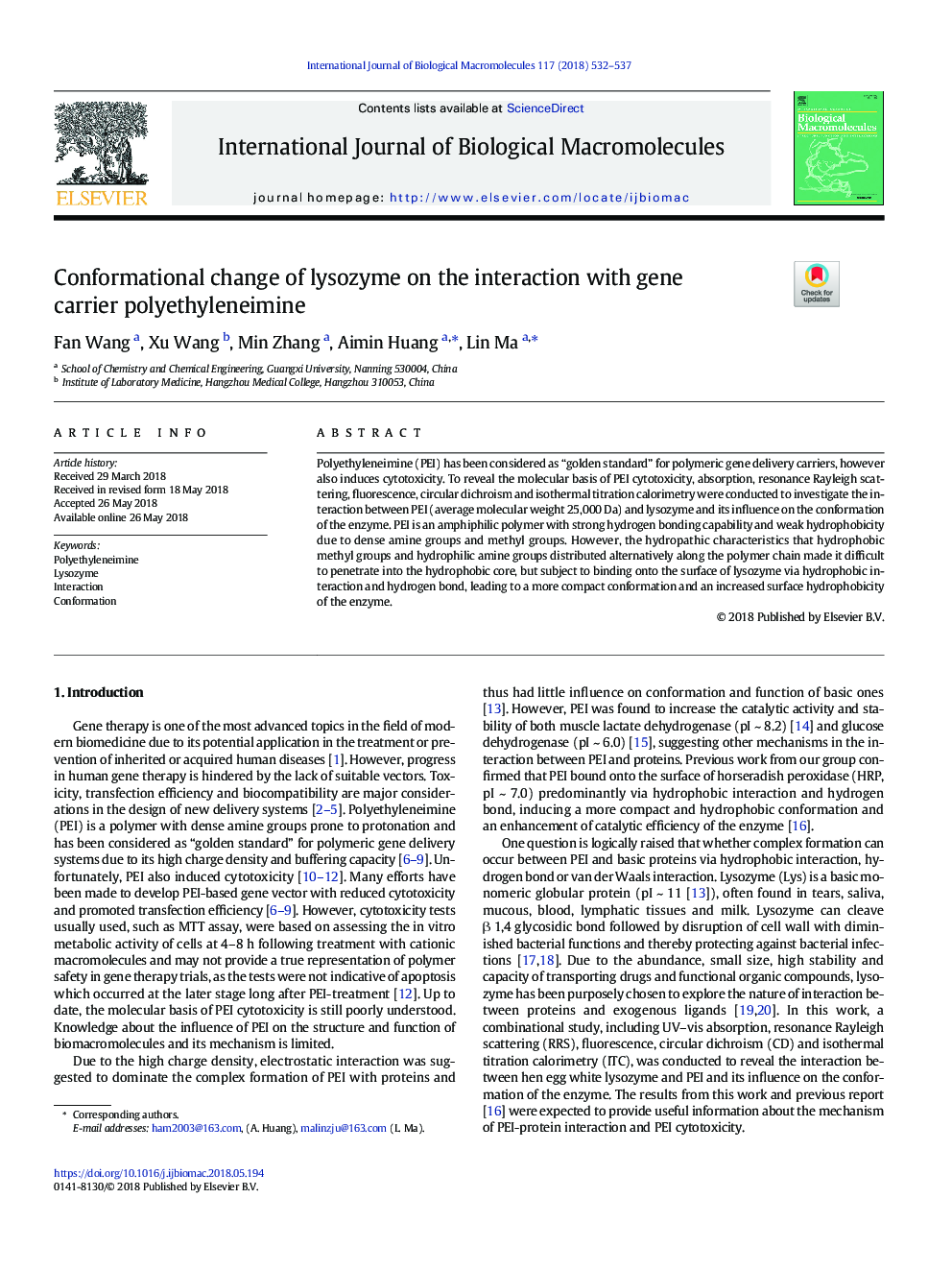| Article ID | Journal | Published Year | Pages | File Type |
|---|---|---|---|---|
| 8326996 | International Journal of Biological Macromolecules | 2018 | 6 Pages |
Abstract
Polyethyleneimine (PEI) has been considered as “golden standard” for polymeric gene delivery carriers, however also induces cytotoxicity. To reveal the molecular basis of PEI cytotoxicity, absorption, resonance Rayleigh scattering, fluorescence, circular dichroism and isothermal titration calorimetry were conducted to investigate the interaction between PEI (average molecular weight 25,000â¯Da) and lysozyme and its influence on the conformation of the enzyme. PEI is an amphiphilic polymer with strong hydrogen bonding capability and weak hydrophobicity due to dense amine groups and methyl groups. However, the hydropathic characteristics that hydrophobic methyl groups and hydrophilic amine groups distributed alternatively along the polymer chain made it difficult to penetrate into the hydrophobic core, but subject to binding onto the surface of lysozyme via hydrophobic interaction and hydrogen bond, leading to a more compact conformation and an increased surface hydrophobicity of the enzyme.
Related Topics
Life Sciences
Biochemistry, Genetics and Molecular Biology
Biochemistry
Authors
Fan Wang, Xu Wang, Min Zhang, Aimin Huang, Lin Ma,
